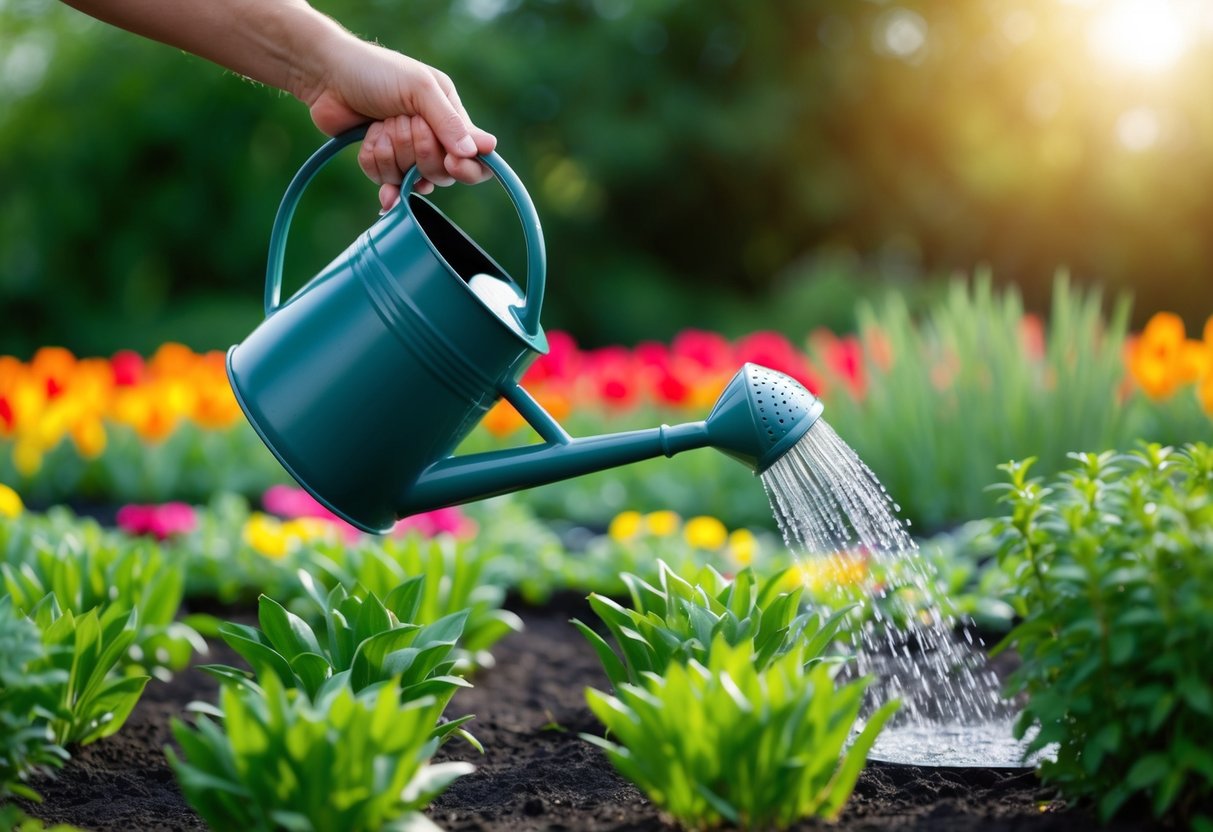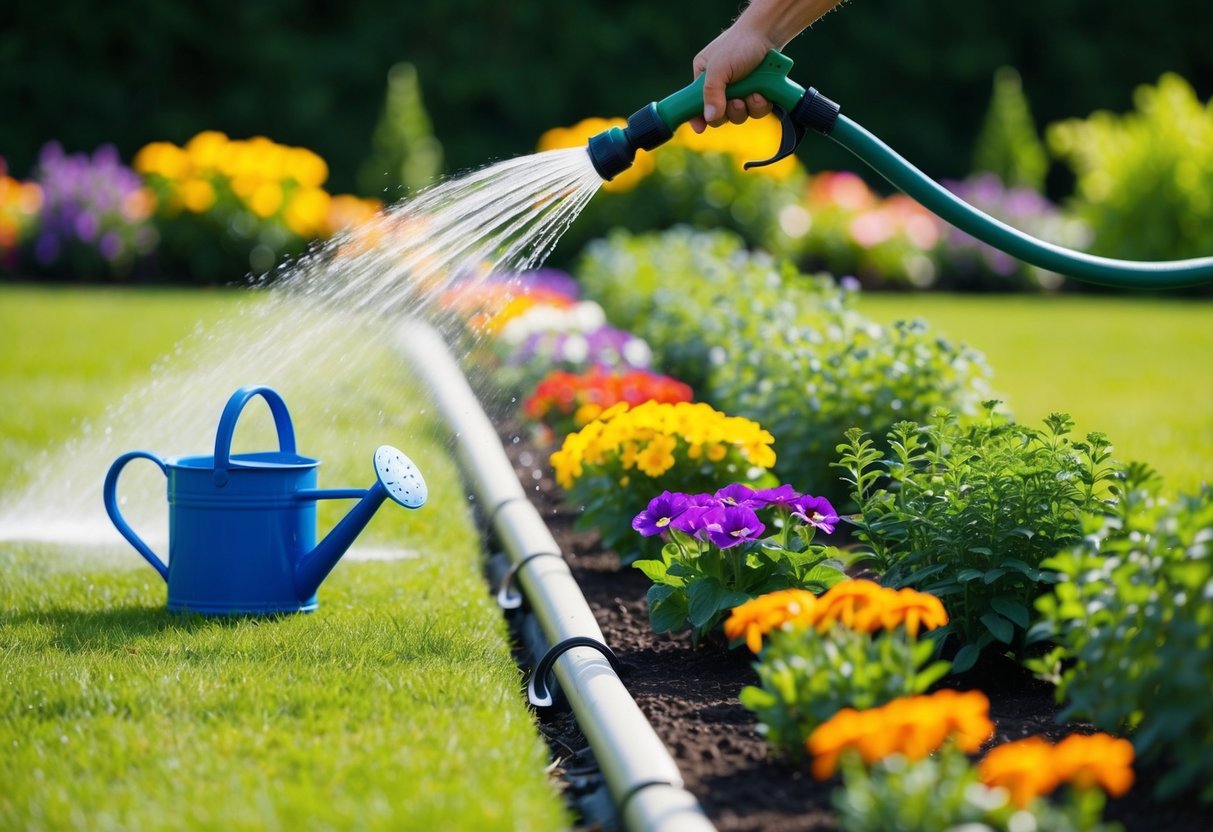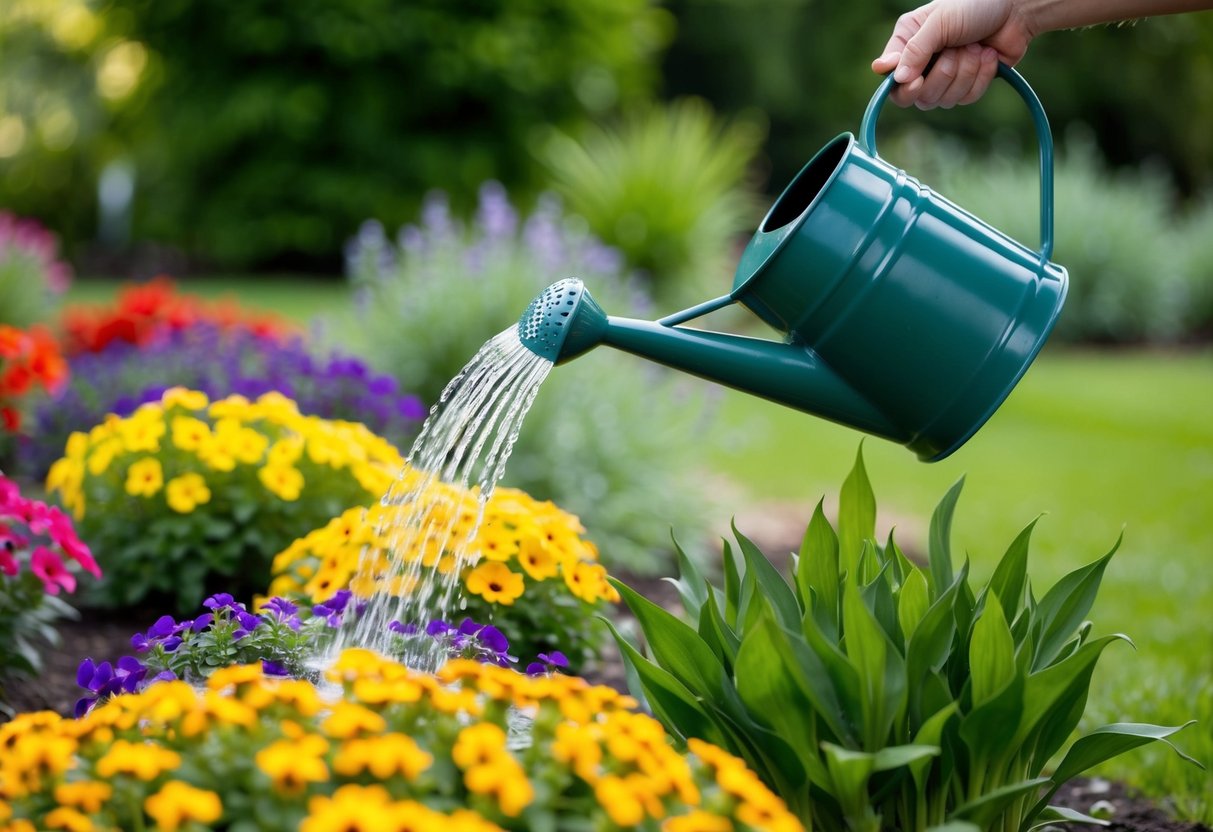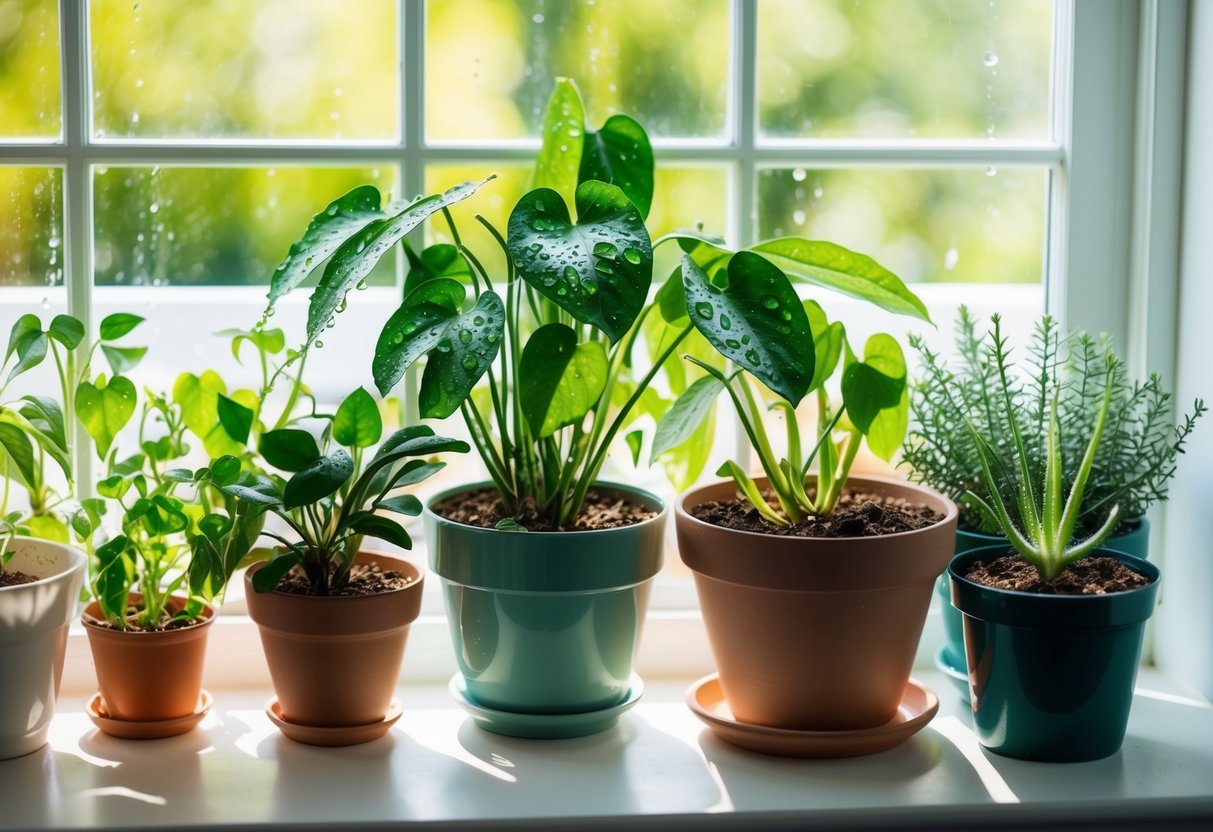Should Bedding Plants Be Watered Every Day? Essential Tips for Gardeners
Are you wondering if you should water your bedding plants every day? In the world of gardening, this is a common question with a nuanced answer. Most bedding plants do not need to be watered every day unless it’s really hot or the plants are in containers.
The needs of your plants can vary, depending on the climate and the time of year.

When growing bedding plants, you might consider factors such as soil moisture and air temperature. Some experts suggest checking the soil moisture by sticking your finger about two inches into the soil. If it feels dry, it’s time to water.
Bedding plants generally need consistent moisture, especially during the warmer months when the sun can quickly dry out the soil. It’s also important to note that while some plants thrive with daily watering, others may suffer from overwatering.
To see if daily watering is necessary, you’ll want to pay attention to the weather and the condition of your plants. Remember, the key to successful gardening is finding the right balance for your plants’ needs. If you’re looking for specific guidance, the tips on gardening with bedding plants might help you create the perfect routine for your garden.
Understanding Plant Water Needs

Knowing how to water your plants properly is essential for their health and growth. It’s important to consider factors like soil moisture, plant type, and signs of overwatering or underwatering to keep your plants thriving.
Soil Moisture and Plant Types
Different plants have unique water needs. For example, drought-tolerant plants like succulents require less water compared to plants with lush foliage.
Checking the soil moisture is key. Stick your finger about an inch below the soil surface. If it feels dry, it’s time to water the plant.
The type of soil also affects moisture retention. Sandy soil drains water quickly, while clay soil retains it longer. Knowing your plant’s natural habitat helps provide the right amount of water. Remember that some plants prefer living in moist environments, while others thrive in drier conditions.
Signs of Overwatering and Underwatering
Both overwatering and underwatering can lead to plant problems. Overwatered plants might show yellowing leaves, especially at the base, and may develop root rot. You might also notice the soil being constantly wet, which isn’t healthy for most plants.
Underwatered plants, on the other hand, often have wilting leaves and drooping stems. If the leaves turn brown at the edges or fall off, it’s a sign your plant needs more water. Watch out for these signs to help you adjust your watering habits and maintain your plant’s health.
Adapting to Plant Water Requirements
Adjusting your watering routine based on your plant’s needs and the environment is important. Consider factors like humidity, temperature, and light when planning your schedule.
During hotter months, you might need to water more frequently, while less water is needed in cooler seasons.
It’s helpful to have a flexible watering routine instead of following a strict schedule. Check the weather and indoor conditions regularly. Using tools like moisture meters can provide more accurate readings of soil moisture, ensuring your plants get proper hydration. Being attentive to your plant’s responses helps you become more intuitive about their water requirements.
Watering Techniques and Tools

Effective watering techniques and tools can greatly impact the health of your bedding plants. Proper methods ensure that water reaches the plant’s roots, while efficient tools can save time and water.
Deep Watering Methods
Deep watering is essential for promoting strong root systems. By watering thoroughly, you encourage roots to grow deeper, making plants more resilient.
One method is using a soaker hose, which delivers water directly to the soil, reducing evaporation.
A drip irrigation system is another great option. It targets water to the plant roots, conserving water and ensuring even distribution. This system can be automated, making it ideal for large gardens or if you’re often away.
If you prefer manual watering, a watering can or watering wand allows for gentle watering close to the base of each plant.
Tools for Efficient Watering
Choosing the right tools can make watering more efficient.
A soaker hose is excellent for larger areas, providing consistent moisture to the soil.
If you’re looking for targeted watering, a drip irrigation system is efficient and minimizes waste. It can be easily set on timers, making it low-maintenance.
For smaller or potted plants, a watering can is practical and easy to use. It allows you to control the amount of water and targets specific areas.
A watering wand, attached to a garden hose, can reach plants at the back of beds and deliver a soft spray, preventing soil erosion and providing even moisture to your plants.
Best Practices for Watering Bedding Plants

Watering bedding plants is crucial for their growth and health. The key is to balance how much and how often you water, as well as retaining moisture in the soil. Below, we delve into making a watering schedule and using mulch effectively.
Creating a Watering Schedule
For bedding plants, it’s important to have a consistent watering schedule. Generally, watering early in the morning is ideal. This allows plants to absorb moisture before the heat of the day causes rapid evaporation.
Aim to water deeply, reaching the roots rather than just wetting the surface. This can encourage stronger root growth.
A simple way to track watering is to use a calendar or an app that reminds you when to water. Regularly check the soil moisture. Insert your finger about an inch into the soil; if it feels dry, it’s time to water again.
Adjust the schedule based on the changing weather, watering more during hot and dry spells and less during rainy periods.
Mulching and Water Retention
Using mulch around bedding plants can greatly aid in water retention. Mulch acts as a barrier, reducing evaporation from the soil. It also helps keep the soil temperature consistent, which is beneficial for plant health.
Organic mulches, like wood chips or straw, decompose over time and add nutrients to the soil.
Spread a layer of mulch about 2-3 inches thick around your plants. Keep the mulch away from the plant stems to prevent rot. This layer will reduce the frequency of watering needed, providing a more stable environment for plant growth. It also suppresses weeds, reducing competition for water and nutrients.
Watering in Different Soil Types

Different soil types affect how you should water your bedding plants. It’s important to understand the characteristics of sandy and clay soils and adjust your watering practices accordingly for optimal plant growth.
Recognizing and Adapting to Soil Differences
Every garden is unique because of the soil type it features. Sandy soil generally has large particles and drains quickly. In this type, water may pass through too fast, leading to quicker evaporation and less moisture for plant roots.
On the other hand, clay soil has fine particles and retains moisture for a longer period. The slow drainage can cause water to pool at the surface, which may lead to root rot if the plants are overwatered.
To determine your soil type, scoop a handful of moist soil and roll it into a ball. If it falls apart easily, it’s likely sandy. If it holds together well, you likely have clay soil.
Adjusting Watering Practices by Soil Type
Each soil type requires a specific watering approach for best results.
For sandy soil, water more frequently but with less water to prevent it from draining away too quickly. Aim for a consistent schedule to keep the soil evenly moist. Consider using mulch to reduce evaporation and keep moisture in the ground.
For clay soil, water less frequently but more deeply. This encourages deep root growth, which can stabilize plants and make them more resilient. Always check the soil’s surface before watering again to avoid waterlogging, ensuring the top few inches have dried out.
By adjusting your watering habits, you can help your plants thrive in their particular soil environment.
Special Considerations for Containers and Houseplants

When caring for container plants and houseplants, it’s important to consider factors like pot size, drainage, and specific plant needs. These aspects play a crucial role in keeping your plants healthy and thriving.
Container Watering Strategies
For container plants, it’s essential to choose the right pot. Make sure it has drainage holes to prevent water from collecting at the bottom.
Using a suitable potting mix is important too, as it retains moisture but still allows excess water to drain.
Large pots hold more soil, which means they may need less frequent watering compared to smaller ones. Pay attention to hanging baskets, as they can dry out faster due to increased air exposure.
Check the soil moisture regularly by sticking your finger about an inch into the soil. If it’s dry, water the plant.
Choose pots based on your plant’s needs. Succulents prefer well-draining containers, whereas indoor plants like ferns may enjoy more moisture. Adjust your watering schedule according to the pot size and plant type.
Houseplant Care and Indoor Conditions
Houseplants often have different needs compared to outdoor plants. Many indoor plants thrive with a consistent watering routine.
You can easily check if your houseplants need watering by touching the top inch of the soil. If it feels dry, give them a drink.
Watch out for poorly lit areas, as plants in low light may require less water. Consider the humidity levels indoors. Dry air, especially in winter, might cause indoor plants to need more frequent watering.
Regularly inspect drainage holes to ensure water doesn’t build up.
Different types of houseplants, such as peace lilies, might have unique watering needs. Keep an eye on your plant’s leaves and adjust your care routine if you notice any wilting or yellowing.







